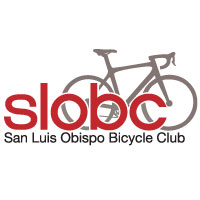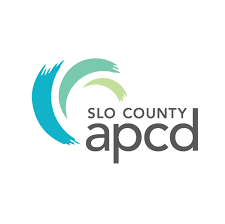Advocacy Toolkit
We’ve put together some useful information about bicycle facilities and projects for you! Use this toolkit to learn:
- How a project gets built
- The types of bicycle facilities
- The various acronyms used by planners and government officials
Download a pdf copy of the toolkit here, or view some of the information below, enjoy!
Our Advocacy Toolkit and Annual Advocacy Summits are made possible in part by Harris Personal Injury Lawyers.
Types of SLO County Bicycle Riders
FEARLESS RIDERS (F) – 15%
 Comfortable riding a bike on any road or intersection regardless of traffic speed, volume, or road conditions.
Comfortable riding a bike on any road or intersection regardless of traffic speed, volume, or road conditions.
CONFIDENT RIDERS (C) – 31%
Comfortable riding a bike on certain roads with wide shoulders, bike lanes, and can navigate busy intersections with ease.
INTERESTED RIDERS (I) – 28%
(Top priority for current Bike SLO County advocacy efforts)
Only comfortable riding a bike on bike paths, roads with bike lanes, or neighborhood streets with low traffic speed and volume.
UNINTERESTED RIDERS (U) – 26%
Does not and will not ever ride bicycles.
(Numbers based on data from the 2013 Bike Barriers Survey. View the SLOCOG report.)
Types of Bicycle Facilities
In all corners of America, we are seeing innovative solutions for bicycles on our roadways. The goal of many of these facilities is to create a safer more comfortable space to get more people riding. To share this incredible progress, we put together this quick guide for you. We hope it will inspire you to think big as we shape the future of bicycles in SLO County together!
The road towards innovative spaces for bicycles in SLO County is long, but Bike SLO County is in it for the long-haul. We are determined to make our communities beacons for bicycles in the golden state of California. Unfortunately, the drive and energy to pursue these successful strategies won’t come from our local leaders and government staff – it comes from you!
With your help, we can make these visions a reality. Join Bike SLO County today to strengthen our voice for bicycles countywide. The more members we have, the faster we can move towards completing our bike paths and putting these innovative solutions to work in your neighborhood.

A bike box is a designated area at the head of a traffic lane at a signalized intersection that provides bicyclists with a safe and visible way to get ahead of queuing traffic during the red signal phase.
SEEN IN: Boston MA, Austin TX, Madison WI
COST: $
PROS:
- Displays clear intention of left hand turn to other vehicles
- Facilitates bicyclist left turn positioning during red signal
- Greatly increases visibility of bicyclists
- Helps prevent ‘right-hook’ conflicts with turning vehicles at intersections
- Pedestrians benefit from reduced vehicle encroachment into the crosswalk

On street bicycle parking spaces allow bicyclists to ride straight up to park their bicycles. One vehicle parking spot can accomodate over 10 bicycles. These corrals can be easily branded to promote neighboring businesses or areas.
SEEN IN: Long Beach CA, Missoula MT, Seattle WA
COST: $$
PROS:
- Decreases sidewalk conflicts between bicycles and pedestrians by preventing sidewalk riding and improper bicycle parking
- Increases storefront visibility for businesses
- One vehicle parking spot can accommodate over 10 bicycle customers

A Class I bike lane (path) provides a completely separated right of way for the exclusive use of bicycles and pedestrians with cross- flow minimized.
SEEN IN: Sacramento CA, Chicago IL, Madison WI
COST: $$$
PROS:
- Allows for a separation from roadway traffic, reducing stress for all users
- Attractive for riders of all levels and ages
- Celebrate and experience natural scenary and wildlife while on the path
- Improves safety for all users
- Increases bicycle rider and pedestrian comfort

A Class II bike lane (lane) provides a striped lane for one-way bike travel on a street or highway adjacent to auto travel lanes.
SEEN IN: Monterey CA, Boulder CO, Austin TX
COST: $
PROS:
- Increases bicyclist comfort and confidence on busy streets
- Creates separation between bicyclists and automobiles
- Increases predictability of bicyclist and motorist positioning and interaction
- Increases total capacities of streets carrying mixed bicycle and motor vehicle traffic
- Visually reminds motorists of bicyclists’ right to the street

A Class III bike lane (route) provides a shared use lane with either pedestrian or motor vehicle traffic. Select routes may contain designated “sharrows” to create a shared lane environment for bicycles and automobiles.
SEEN IN: Long Beach CA, New York NY, Eugene OR
COST: $
PROS:
- Encourages bicyclists to position themselves safely in lanes too narrow for a motor vehicle and a bicycle to comfortably travel side by side within the same traffic lane
- Alerts motor vehicle drivers to the potential presence of bicyclists
- Provides a way-finding element along routes
- Demonstrated to increase the distance between bicyclists and parked cars, keeping bicyclists out of the “door zone”
- Encourages safe passing by motorists
- Requires no additional street space
- Reduces sidewalk riding and wrong-way riding

Protected bikeways that are street level and use a variety of methods for physical separation from traffic. A one-way Class IV cycle track may be combined with a parking lane or other barrier between the track and vehicle travel lane.
SEEN IN: San Francisco CA, Washington DC, Bend OR
COST: $$
PROS:
- Attractive for riders of all ages and abilities
- Dedicates and protects space for riders by improving perceived comfort and safety
- Eliminates risk and fear of collisions with passing vehicles
- Makes use of existing pavement and parking lane as a barrier
- Prevents double-parking

Class IV two-way cycle-tracks are physically separated spaces that allow bicycle movement in both directions on one side of the road. Also known as protected bike lanes, separated bikeways, and on-street bike paths.
SEEN IN: Boulder CO, Chicago IL, Cambridge MA
COST: $$
PROS:
- Dedicates and protects space for riders by improving perceived comfort and safety
- Eliminates risk and fear of collisions with passing vehicles
- On one-way streets, reduces wrong direction travel by providing two-way movement for bicycles
- Reduces risk of ‘dooring’

These systems make bicycles available for shared use to individuals on a very short term basis. The short ‘check-out’ time is designed to keep bicycles in stations for users and to close the last mile of your trip.
SEEN IN: Denver CO, Kansas City MO, Minneapolis MN
COST: $$$$
PROS:
- Allows people to easily try riding
- Allows visitors to use bicycles during their stay
- Breaks down the financial, storage and maintenance barriers of bicycles
- Connects the last mile of public transit trips
- Increases bicycles on the roadway, increasing road safety for all road users

Colored pavement in a bicycle lane increases visibility, identifies potential areas of conflict, and reinforces priority to bicyclists in conflict areas and in areas with pressure for illegal parking.
SEEN IN: Indianapolis IN, Baltimore MD, New York NY
COST: $
PROS:
- Discourages illegal parking in the bike lane
- Helps reduce bicycle conflicts with turning motorists
- Increases the visibility of riders
- Increases bicyclist comfort through clearly delineated space
- Increases motorist yielding behavior
- Promotes the multi-modal nature of a roadway

Intersection crossing markings indicate and guide the intended path of riders. They provide a clear boundary between the paths of bicyclists and motor vehicles in the aadjacent travel lanes.
SEEN IN: San Diego CA, Missoula MT, Seattle WA
COST: $
PROS:
- Guides riders through the intersection in a direct path
- Makes bicycle movements more predictable and visible
- Reduces conflicts between bicyclists and turning motorists
- Reinforces that straight moving bicyclists have priority over vehicles turning or entering the roadway

An under-crossing provides a separated bike path the direct links it needs to be fully connected. By bringing a path beneath the roadway it maintains the integrity and purpose as a bicycle and pedestrian space.
SEEN IN: Davis CA, Culver City CA, Pittsburgh PA
COST: $$$
PROS:
- Attractive for riders of all levels and ages
- Continues to separate a bike path from the roadway, allowing users to avoid the stress of riding near motor vehicle traffic
- Improves safety for all users
- Increases bicycle rider and pedestrian comfort

Designed to reduce or discourage thru traffic on designated bicycle boulevard corridors. Physical barriers to motor vehicle traffic prioritize bicycle movements, greatly increasing the comfort and travel routes of riders.
SEEN IN: Berkeley CA, Palo Alto CA, Eugene OR
COST: $$
PROS:
- Establishes and reinforces bicycle priority by restricting vehicle through movements
- Provides opportunities for landscaping, storm water management, and other features
- Reduces motor vehicle volumes on a bicycle boulevard

A traffic control device used in combination with an existing traffic signal or hybrid beacon. Bicycle signals are used to improve safety or operational problems involving bicycles or for guidance at intersections where conflicts arise.
SEEN IN: Tucson AZ, Portland OR, Salt Lake City UT
COST: $$
PROS:
- Accommodates bicycle-only movements at signalized intersections
- Helps to simplify bicycle movements through complex intersections and improve visibility
- Provides priority to bicycle riders at intersections
- Separates bicycle movements from conflicting road user movements
Infrastructure: Concept to Completion
The following section follows a bicycle friendly infrastructure project through its typical stages from concept to completion. Depending on scale, getting a project built in your community may take months or years.
Small-scale localized projects can sometimes be completed swiftly by working directly with city staff. Large-scale regional projects take years to complete because they are more expensive, require studies, environmental reports and need political support from various cities, the county, or more.
Whether imagining one project that would change your neighborhood forever or working to make sweeping change in your community, every single improvement starts with a great idea.
Dream big! If an idea is never presented to local decision makers and staff, then it will rarely see the light of day. This part of the process is where we can all think outside the box, and imagine the most innovative solutions to create a bicycle friendly future.
ACTION:
- Reach out to friends, family, and others to determine what projects would encourage them to ride their bike more often.
- Contact Bike SLO County to help determine where the projects are needed most.
WARNING:
- Some projects may only help very few people or one type of bike rider, focus on projects that invite more people to try riding a bike.
A Bike Plan is blueprint for future bike friendly projects in your community. Bike Plans are required to be updated every five years, approved through public hearings by advisory committees and the City Council. You want your dream project in the Bike Plan and made a high priority in order to be completed on the short term.
ACTION:
- Support funding Bicycle Master Plan Update through advocating for general fund investment or providing support with grant applications.
- Engage in the Bike Plan update to be sure all dream projects make it onto the blueprint.
- Advocate for Bike Plan approval when on agenda of advisory committees, Planning Commission, City Council or Board of Supervisors.
- Research the map or list of proposed projects in the Bike Plan to determine if your dream project is already on the blueprint.
WARNING:
- Advocating directly to city council to highlight need for projects not in the plan and have them added through a bike plan amendment or at the next update can be difficult but will result in further dream project discussion.
ADDITIONAL INFORMATION:
Bike Plans also contain great information about city policies pertaining to bikes, project cost estimates, design standards, potential funding sources and more.
The General Plan contains policy and governance rules that the Council, Board, and Staff are held accountable to. The Circulation Element is the section of the General Plan that provides a blueprint for transportation projects.
ACTION:
- Advocate for Bike Plan to be integrated into General Plan when Bike Plan update is being approved.
- Engage in the Circulation Element update process to be sure all Bike Plan projects make it into the General Plan.
- Advocate for General Plan approval when on agenda of advisory committees, Planning Commission, City Council, or Board of Supervisors.
- Advocate for General Plan update if outdated.
WARNING:
- General Plan update is a large-scale city project and will only occur when city resources are available. Advocate for General Plan update if outdated.
City staff, advisory bodies, and decision makers evaluate projects to determine their priority and ensure that the right projects are being built at the right time to best serve the needs of the community. High priority projects have the greatest likelihood of being completed in a timely manner. Small-scale projects of high priority may skip the Feasibility, Environmental Impact, and Land Acquisition stages of the process and skip directly to Final Design and Construction.
ACTION:
- Get your dream project set as a high priority through Bike Plan and Capital Improvement Project list.
- Help set project priorities by working with city staff during bike plan development or update.
- Advocates can go to advisory bodies, City Council, or Board of Supervisors to emphasize the need for dream project to be made a higher priority.
WARNING:
- Project priority is determined by evaluating safety concern, bikeway network connectivity, cost, and feasibility.
- Changes to priority ranking outside formal Bike Plan update process are more difficult and may require approving changes to Bike Plan.
If a project is proposed in the Bicycle Plan, General Plan, and/or other governing documents a preliminary study of the project to determine scope, general design concepts, and feasibility may be necessary.
ACTION:
- Support funding feasibility/project study through general fund investment or provide support with grant applications.
- Engage in public workshops to emphasize support and influence project scope.
- Emphasize community wide value of project to win stronger broad reaching support.
WARNING:
- Proceed with caution around voices of opposition, careful to account for opposing points of view and develop strong counter arguments.
The California Environmental Quality Act (CEQA) requires projects with significant impact to the environment to produce an Environmental Impact Report (EIR). The National Environmental Protection Act (NEPA) requires any project that receives federal funding, work, or permits to produce an Environmental Impact Statement (EIS). Once prepared, the environmental documents, EIR and/or EIS, must be certified by the City Council before the project can enter its final phases. Public hearings are held throughout the certification process.
ACTION:
- Support funding environmental work through advocating for general fund investment or provide support with grant applications.
- Engage in public workshops to emphasize support, influence project scope, and successfully establish project details.
- Advocate for approval of EIR approval when on agenda of advisory committees, Planning Commission, City Council, or Board of Supervisors.
WARNING:
- EIR’s that fail to assess full environmental impact may be challenged in court.
- Project details and alternatives approved in EIR set requirements for final project design, projects must be built within EIR scope or may be otherwise challenged in court.
- Overarching project details are approved through EIR approval; community engagement is essential to maximize success of project.
After the environmental studies are completed the City will need to acquire the right-of-way for the project. This is most common with bike paths but is not typically needed for bike lanes or routes unless road widening is necessary. Typically the City will acquire land through purchase at fair market value or through an easement granted by the landowner through their generosity or as a condition of a needed permit.
ACTION:
- Support funding for land acquisition through advocating for general fund investment or provide support with grant applications.
- Private fundraising efforts are sometimes utilized to help local jurisdictions provide matching funds required of state and federal grants.
WARNING:
- Land acquisition hopes are sometimes dashed when owners choose not to sell, encourage staff to get willing to sell commitments as early in the project process as possible.
City staff or consultants will prepare the final design documents for the project completing plans and engineering work. Final documents will be made available to the public for review. The Planning Commission, City Council or Board of Supervisors must approve final design before the project can be constructed and public hearings are sometimes held throughout the final approval process.
ACTION:
- Support funding for final design through general fund investment or provide support with grant applications.
- Advocate for the best possible project by working with city staff or attending advisory body, Planning Commission, City Council or Board of Supervisors meetings as final design is completed and approved.
WARNING:
- Specific project details are approved during final design; community engagement is essential to maximize success of project.
City staff or hired contractors will perform the construction work required to complete the project. If contracted, the firm performing the work is responsible for the quality of the work and will be subject to inspections performed by city staff.
ACTION:
- Support funding for construction through general fund investment or provide support with grant applications.
- Celebrate commencement of project construction publicly.
- Notify the public of project completion, emphasizing big picture of future project plan if current phase is underwhelming.
- Attend ribbon-cutting events focusing on praising decision makers, allies, and staff in working to complete the project.
WARNING:
- Necessity to complete projects in phases when funding is available results in ribbon cuttings that celebrate what appear to be incomplete, problematic, or inconsequential projects.
- Projects are not always constructed according to final design, expressing concerns regarding discrepancies must occur immediately in order for staff to hold construction crews responsible for flaws.








